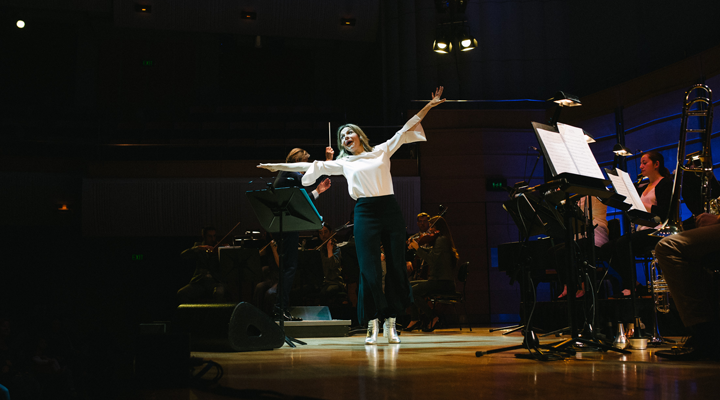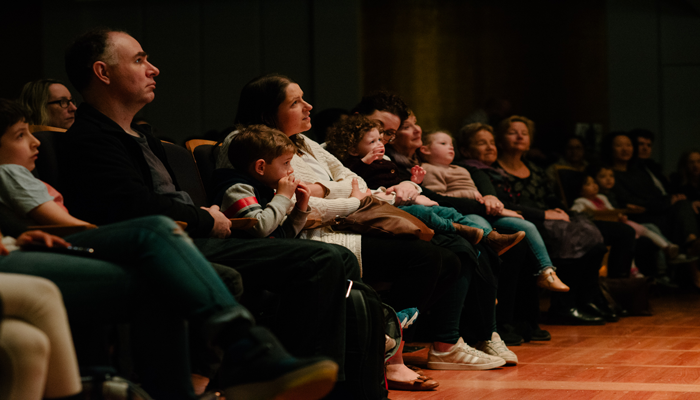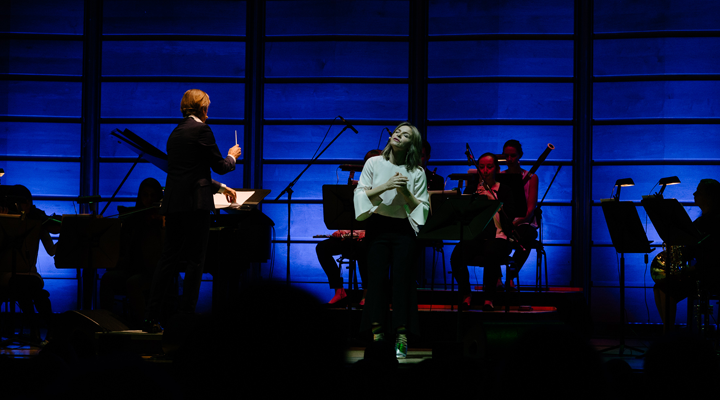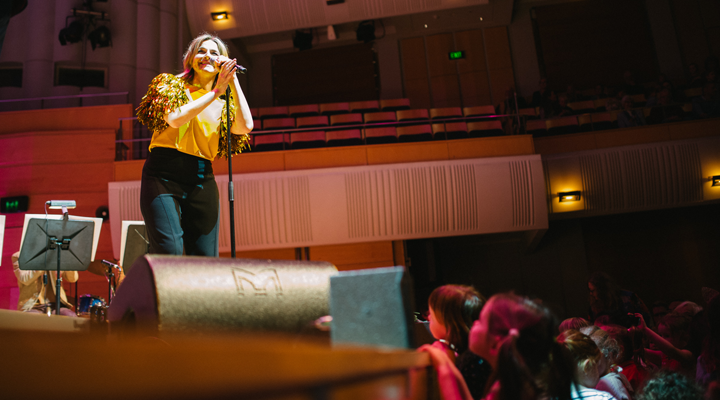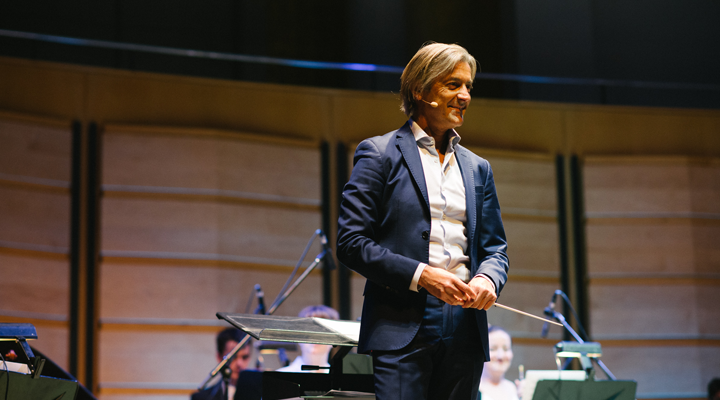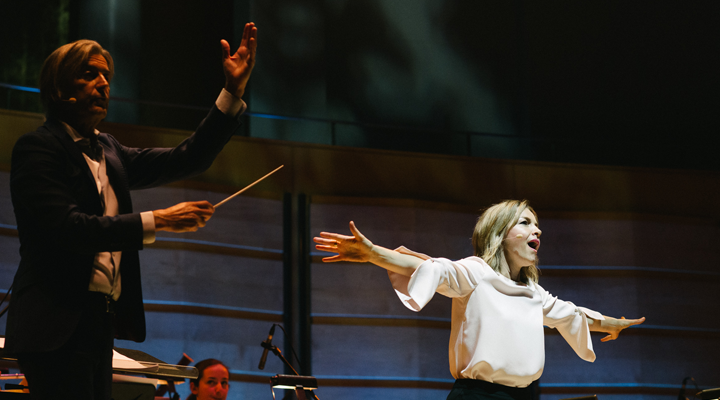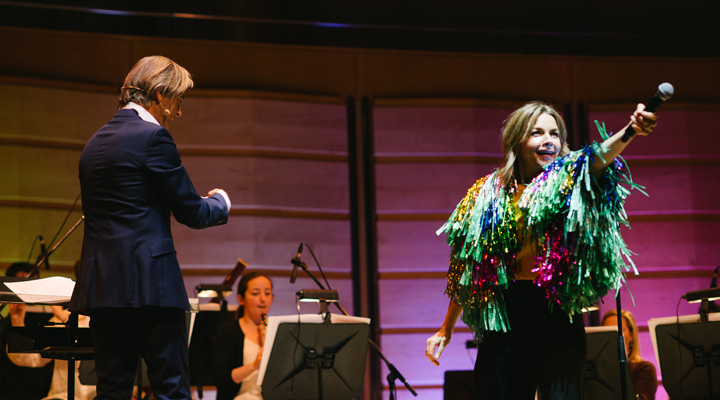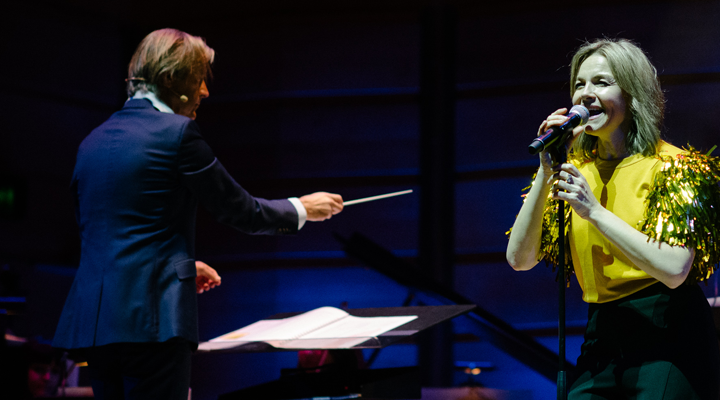A little magpie is blown from her nest. She lands on the edge of a suburban oval. All she can remember is something she heard, something big and beautiful… Mimi’s Symphony is a new orchestral story for Australian children. Join writer and narrator Justine Clarke and composer and conductor George Ellis as they take you on a journey with Mimi the magpie. She’ll encounter different animal gangs, learn how to survive in the suburbs and ultimately bring everyone in the park together. Through this engaging and lively story, kids will meet the sections of the orchestra as they come together in a joyous symphony!
Sydney Opera House Review of Mimi’s Symphony
A write up of Mimi’s Symphony from the Sydney Opera House, including a fabulous interview with George Ellis and Justine Clarke.
Extract From Mimi’s Symphony
Mimi’s Symphony Review
Published in limelightmagazine.com.au
The energy at the City Recital Hall, on a crisp winter’s morning was palpable. Decked out in their finest tiaras and sparkles aplenty, the youthful crowd was brimming with excitement for the world premiere of Mimi’s Symphony, a new orchestral story created for Australian children and families.
When one thinks of orchestral stories for children, most people recall having heard Sergei Prokofiev’s fairy tale for children Peter and the Wolf at some point in primary school and can remember being fascinated by the composition, which was written to introduce children to the different instruments of the orchestra.

Cleverly written by Justine Clark and composer George Ellis, who conducted an 18-piece orchestra in upbeat fashion, Mimi’s Symphony also took the audience on a captivating journey where they got to meet each section of the orchestra, as the various instruments portrayed Mimi and her friends. Perhaps most importantly in an Australian context, Mimi’s Symphony is a local suburban story and much like the ABC’s Bluey which has captured an entire generation of children and their parents, this new orchestral work will likely do the same. During the 30-minute piece the audience gets to know Mimi, a baby magpie who is blown from her nest. She lands on the edge of an oval where she encounters a cacophony of animals, sounds and sensations. Mimi’s story is narrated by Clarke who transports the audience as she shares the adventures of the little lost magpie, following her journey as she gradually grows stronger, discovers she is a Magpie, struggles to find her tribe, and discovers the strength of her heat beat with its thudding transfixing resonance.
As we are introduced to the orchestra, we observe that subtle colour variations in clothing have been used as a visual cue to guide our listening: strings are grey and convey the sounds of the possums, while the woodwinds are black and white and are magpies. The dogs in the tale are brown and are represented by the brass family, who sit alongside the percussive green insects. Finally we meet the fifth section of Ellis’s orchestra – the audience who are asked to create the whooshing, whirling sound of the wind using their mouths.

The orchestra plays skilfully, and one can hear the chatter of the animals brought to life by the various sounds, articulated with careful playing and whimsy. Perhaps the greatest triumph of the work is that it allowed families to introduce their children to orchestral music without it feeling in any way condescending or age-specific. Whether or not an adult or child was new to orchestral music, it provided them with a high-quality opportunity to discover a great work and to appreciate orchestral instruments.
After the symphony concluded, there was great excitement when Clarke came back onstage sporting a rainbow-hued, tasselled metallic jacket and commenced a 20-minute set of her biggest hits, as what I heard affectionately described as a small-person mosh gathered at the front of the stage. Clarke exudes a warmth as an entertainer that can’t help making audience members both young and old leave the venue with a smile across their faces.
Photo Gallery
